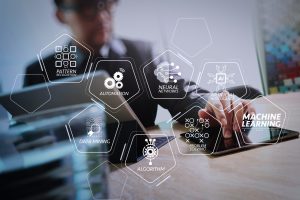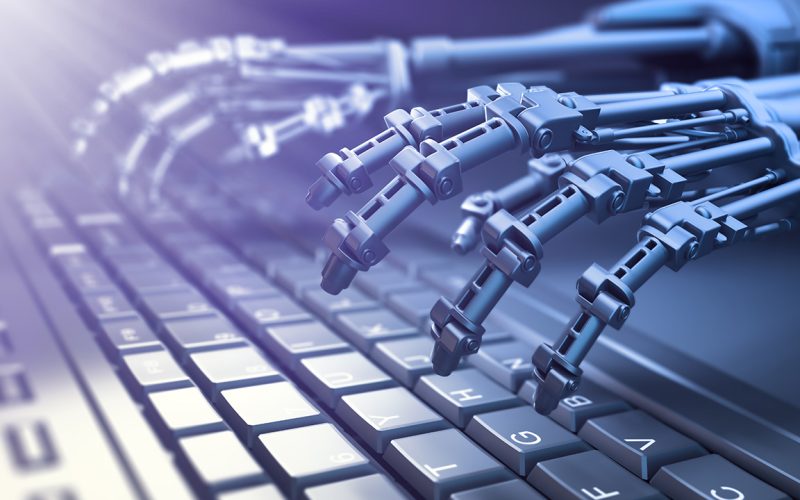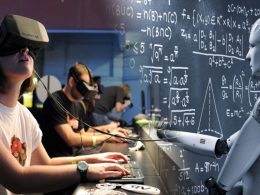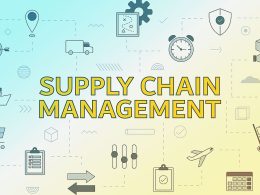In today’s fast-evolving business landscape, enterprises are constantly seeking ways to improve efficiency, reduce costs, and enhance productivity. Hyperautomation, powered by artificial intelligence (AI), has emerged as a game-changing solution for companies looking to accelerate their digital business initiatives. By integrating AI in business operations, organizations can automate complex processes, streamline workflows, and drive innovation.
What is Hyperautomation?
Hyperautomation is the process of automating multiple business and IT processes using a disciplined, business-driven approach. It goes beyond basic automation by utilizing AI, robotic process automation (RPA), and other advanced technologies to automate end-to-end processes across various departments. From AI-powered decision-making to RPA on production floors, hyperautomation enables companies to improve agility, collaboration, and productivity while driving down operational costs.
The Role of AI in Business Operations

AI in business operations is transforming the way companies function, acting as a central catalyst for business process automation. AI enables organizations to integrate automation into every layer of their operations without requiring deep technical development expertise. Thanks to advancements like OpenAI’s ChatGPT, businesses can now access AI tools that were once reserved for tech giants.
Key Benefits of AI-Powered Hyperautomation
Enhanced Productivity and Efficiency AI-powered automation tools help businesses streamline processes, allowing teams to focus on higher-value tasks. By automating repetitive tasks like data entry, inventory management, and customer support, companies can significantly boost productivity and operational efficiency.
Example: An AI-powered chatbot can handle customer inquiries 24/7, ensuring that customer service is always available, while human agents can focus on more complex queries.
Cost Reduction Hyperautomation helps reduce operational costs by automating workflows, reducing errors, and minimizing the need for manual intervention. Businesses that implement hyperautomation see a reduction in labor costs and enhanced resource allocation.
Case Study: A retail company using AI in inventory management reduced overstock by 25%, cutting down warehouse costs and improving stock turnover.
Improved Decision-Making with Real-Time Analytics AI can analyze large volumes of data in real-time, enabling businesses to make data-driven decisions faster. AI algorithms can detect patterns, provide insights, and predict trends, giving businesses a competitive edge.
Example: AI-powered analytics can forecast market demand, allowing retailers to adjust stock levels to meet customer demand, thus preventing stockouts or overstock.
Seamless Integration Across Platforms AI-powered plugins can enable seamless data flow across different systems and platforms, eliminating the need for manual data transfer. This helps reduce errors and improves operational agility.
Example: In a messaging platform like Slack, an AI plugin can pull data from a connected CRM system and present it to the user without them having to switch between applications.
Improved Recruitment Process AI in recruiting can automate resume analysis, ranking candidates, and suggesting job matches, helping HR teams save time and effort in the hiring process.
Case Study: A healthcare company integrated AI into its recruiting system, reducing the time spent screening candidates by 40% and significantly increasing the quality of shortlisted candidates.
Customizable Workflows With AI, businesses can create customizable workflows tailored to each team member’s preferences. For instance, some employees may prefer email, while others use messaging apps like Slack. AI ensures that workflows are routed efficiently, improving overall team productivity.
Example: A project manager prefers Slack for task updates, while the sales team uses email. AI intelligently routes communication between them, ensuring no tasks are missed.
AI in Different Business Functions
AI in Customer Support Businesses are increasingly relying on AI-powered chatbots and virtual assistants to improve customer support. AI bots can handle simple customer queries, leaving human agents to address more complex issues.
Case Study: An e-commerce platform integrated AI chatbots into its customer support system, reducing average resolution time by 50% and increasing customer satisfaction.
AI in Human Resources In addition to recruitment, AI is transforming HR processes like performance evaluation, employee engagement, and training.
Example: AI can monitor employee performance metrics, providing real-time feedback and personalized development plans.
AI in Finance AI algorithms are revolutionizing financial services by automating tasks like fraud detection, financial forecasting, and compliance.
Case Study: A global bank implemented AI for fraud detection, reducing false positives by 30% while improving its ability to identify actual fraud cases.
AI in Inventory Management AI-powered systems can predict demand, optimize inventory levels, and automate stock replenishment.
Example: A retail giant reduced inventory management costs by 20% using AI-powered predictive analytics, preventing stockouts and reducing overstock.
Analysis Table: AI and Hyperautomation in Key Business Areas
| Business Function | AI-Powered Automation Examples | Benefits |
|---|---|---|
| Customer Support | AI chatbots and virtual assistants | 24/7 support, reduced response time |
| Human Resources | AI-driven recruitment and performance tracking | Time savings, improved candidate quality |
| Inventory Management | Predictive analytics for stock optimization | Reduced costs, improved demand forecasting |
| Finance | AI for fraud detection and compliance | Enhanced accuracy, reduced manual effort |
| IT and Security | AI for threat detection and cybersecurity | Proactive monitoring, improved data security |
| Sales and Marketing | AI for personalized customer experiences | Improved customer targeting, higher conversions |
Challenges and Considerations for AI and Hyperautomation

While the benefits of AI and hyperautomation are numerous, businesses must also address certain challenges:
Data Privacy and Security With increased automation comes the risk of data breaches and misuse of sensitive information. Businesses need to ensure compliance with data privacy regulations and implement robust security measures to protect customer and organizational data.
Example: The EU’s AI Act is a legislative framework that aims to regulate the ethical and responsible use of AI, ensuring that businesses follow best practices in AI deployment.
Human Oversight and Ethical AI Use AI is powerful, but it requires human oversight to ensure it operates ethically and responsibly. While AI can automate many tasks, it cannot replicate human judgment, creativity, or emotional intelligence. Organizations must foster a collaborative environment where humans and machines work together effectively.
Case Study: A financial firm used AI to automate routine audits but retained human auditors for complex cases, ensuring ethical oversight and critical thinking were applied.
AI Adoption and Scaling Businesses must take a thoughtful approach to introducing AI models and scaling AI initiatives. While AI holds great potential, it is important to balance the integration of AI with human roles to avoid job displacement or misuse of the technology.
Example: A manufacturing company adopted AI-driven robotics for production tasks but retrained employees for new roles in managing AI systems and overseeing operations.
Future Outlook: AI and Hyperautomation in Business Operations
The future of AI and hyperautomation looks promising, with businesses continuing to adopt AI-driven processes to enhance operational efficiency. AI and hyperautomation will become even more integral to business strategy as companies seek to scale their operations and remain competitive in a global marketplace.
Education and Skill Development: To fully harness the potential of AI and hyperautomation, companies need to invest in educating their workforce about AI capabilities and how to work alongside these systems. Employees equipped with both technical and soft skills like creativity, critical thinking, and emotional intelligence will thrive in AI-integrated workplaces.
Industry-Wide Implications: From healthcare to retail, AI and hyperautomation are poised to revolutionize industries. AI will streamline operations, reduce costs, and drive innovation in ways that were previously unimaginable.
Conclusion
In conclusion, AI and hyperautomation offer unprecedented opportunities to revolutionize business operations across industries. By leveraging AI-driven automation, companies can enhance productivity, reduce costs, and make smarter decisions—all while ensuring a collaborative environment where humans and machines work together to drive innovation. The key to success lies in balancing the integration of AI with human oversight, ensuring ethical use, and fostering continuous learning for a future that fully embraces the potential of AI and hyperautomation.










